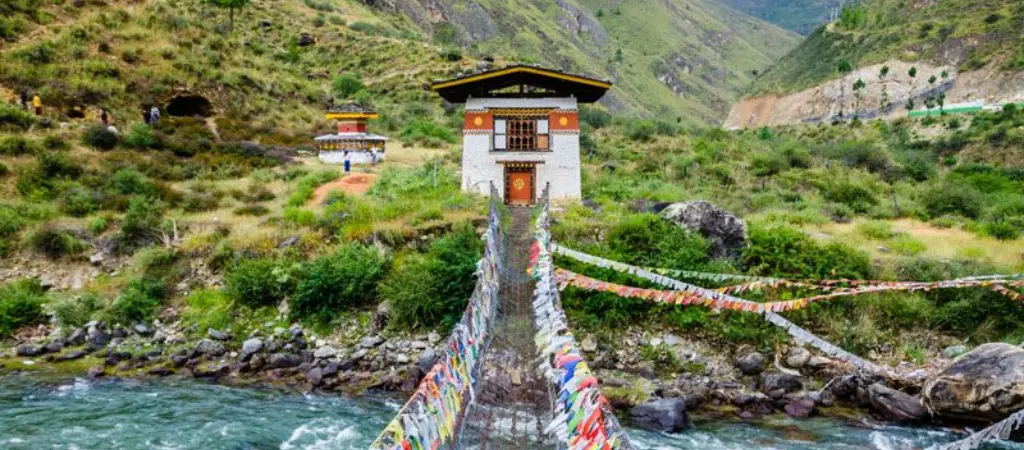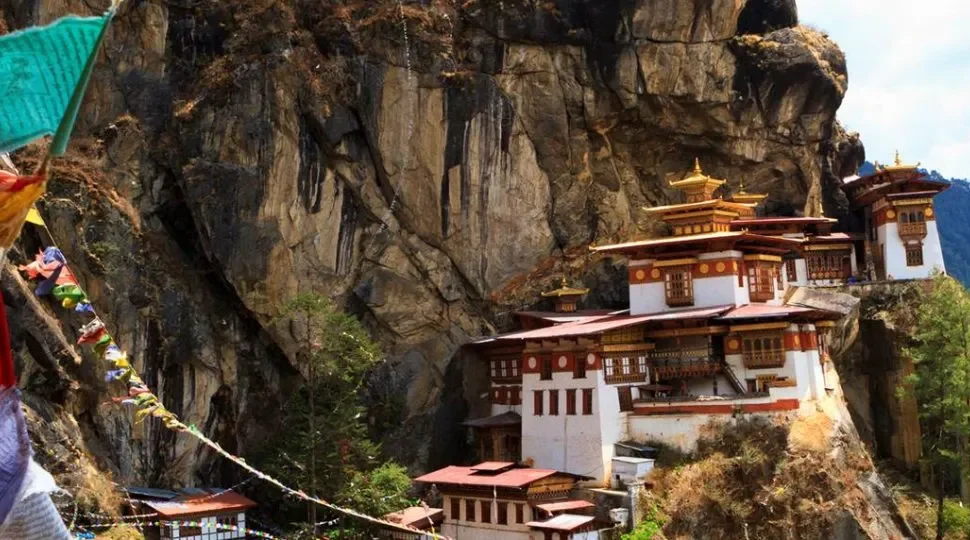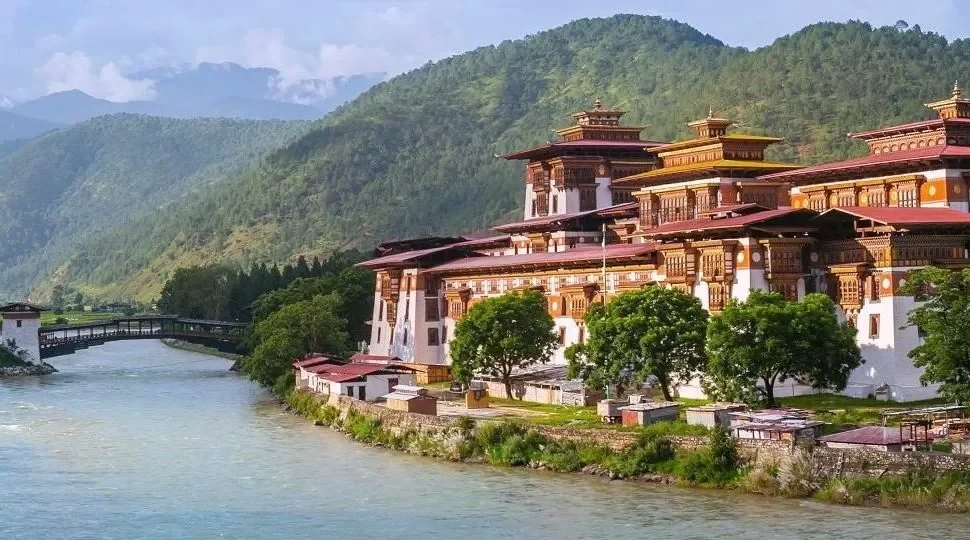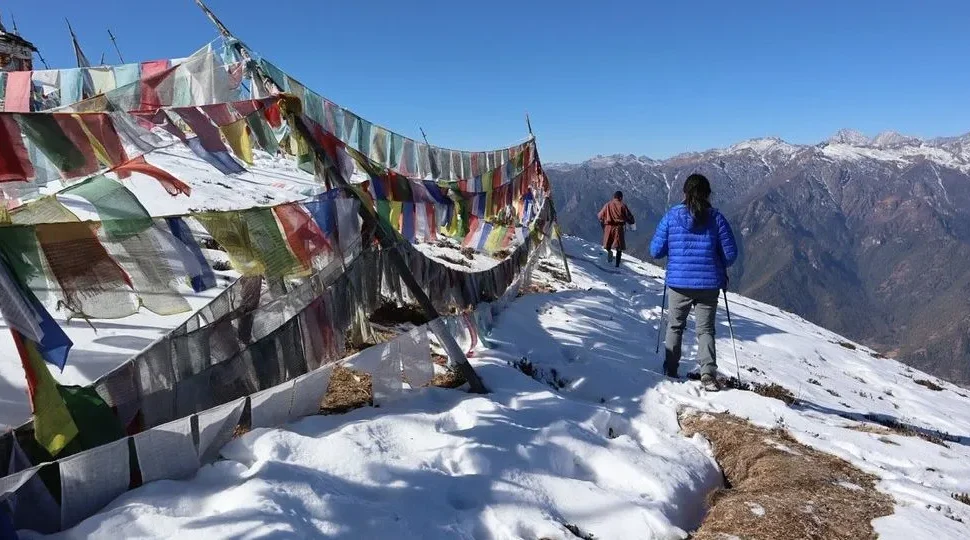Bhutan is a small country tucked high up in the Himalayas with its unique culture and traditions. Bhutan is the only Buddhist Kingdom in the world where Mahayana Buddhism is the official religion of Bhutan. Bhutan is popularly called ‘the land of the thunder dragon’ and is also considered the world’s happiest country. So, there are many Buddhist monasteries, Dzongs, monastery fortresses, temples, and shrines scattered all over the country. Paro is the only entrance into Bhutan via flight where you land at the Paro International Airport. The capital of Bhutan is Thimphu which is a tiny township located in western Bhutan. There are many great places to visit in Bhutan. top places to visit in Bhutan includes a hike to Taktsang Monastery, Paro Ringpung Dzong, Kyichu Lhakhang, Haa Valley, National Memorial Chorten, Thimphu Weekend Market, Buddha Point Thimphu, Dochula Pass (3,050m), Punakha Dzong, Chimi Lhakhang ‘fertility temple’, Gangtey Monastery, Phobjikha Valley, Bumthang, Trongsa Dzong etc. 10 best places to visit in Bhutan includes Taktsang Monastery ‘Tiger’s Nest’ in Paro, Dochu la pass (3,050m) en route from Thimphu to Punakha, Buddha Dordenma in Thimphu, Punakha Dzong, Paro Rinpung Dzong, Kyichu Lhakhang in Paro, Chimi Lhakhang ‘fertility temple’ en-route Thimphu to Punakha, Phobjikha Valley in Gangtey, Trongsa Dzong, and Bumthang Valley with several age-old monasteries and temples. The best places to visit Bhutan for a honeymoon are pretty much all the popular destinations like Paro, Thimphu, Punakha, Gangtey, or Bumthang.
Taktsang Monastery ‘Tiger’s Nest’
Located outskirts of Paro town is Taktsang Monastery which is more popularly known as ‘Tiger’s Nest’. It’s called so because it’s believed that Guru Padmasambhava landed on the back of a tigress in 8th century from Tibet and meditated at this spot. The monastery is situated on a vertical cliff defying all engineering logics at 3,120 meters. Any Bhutan tour is incomplete with a hike to Taktsang Monastery.
Dochu la pass (3,050m)
Dochu la pass at 3,050 meters is en-route Thimphu to Paro. The pass commands some spectacular panorama of the eastern mountains. There are also altogether 108 memorial chortens or stupas known as “Druk Wangyal Chortens” erected atop a small hill on the pass which is built by Ashi Dorji Wangmo Wangchuk, the eldest Queen Mother. There is also a monastery at the pass which is known as the Druk Wangyal Lhakhang (temple), built in honour of the fourth Druk Gyalpo (head of the state of Bhutan). the annual Dochula Druk Wangyel Festival is held at the open ground in this temple’s front yard.
Buddha Dordenma, Thimphu
Buddha Dordenma is the immense statue of Lord Buddha atop a hill at Thimphu. It was erected celebrating the 60th anniversary of fourth king Jigme Singye Wangchuck. The statue has over one hundred thousand smaller Buddha statues that are made of bronze and gilded in gold. The Great Buddha Dordenma often also known as ‘Buddha’s point’ is sited amidst the ruins of Kuensel Phodrang. One gets a beautiful view of the Thimphu Valley from Buddha’s point. It’s one of the largest Buddha’s idol in the world standing at 169 feet (52 m).
Punakha Dzong
Punakha Dzong arguable is one of the most beautiful monasteries in Bhutan. It’s beauty is even more especially during spring when the lilac-coloured jacaranda trees bring a lush sensuality. This monastery served as the capital and seat of government until the mid-1950s where all of Bhutan’s kings have been crowned here. Punakha Dzong is also the administrative center of Punakha District in Punakha. it is the second oldest and second-largest monastery in Bhutan and was built in 1637–38.
Paro Rinpung Dzong
Paro Rinpung Dzong is the largest monastery in Paro District. This beautiful monastery houses the district Monastic Body and government administrative offices of Paro Dzongkhag. Paro Rinpung Dzong is listed as a tentative site in Bhutan’s Tentative List for UNESCO World Heritage Sites. The monastery is the finest sample of Bhutanese architecture and is built on a steep hillside. A traditional wooden covered bridge called Nyamai Zam crosses over the Paro Chhu ‘river’ to get to the monastery.
Kyichu Lhakhang, Paro
Kyichu Lhakhang is one of the oldest shrines in Bhutan. It was built in the 7th century by the Tibetan king Songtsen Gampo. One can notice elderly pilgrims constantly shuffle around the temple spinning its many prayer wheels. As you enter the temple and into it’s inner courtyard, one can observe to the right of the doorway a mural of King Gesar of Ling, the popular Tibetan warrior-king, whose epic poem is said to be the world’s longest. The inner hall of the fantastically atmospheric main Jowo Lhakhang holds the valley’s greatest treasure, an original 7th-century statue of Jowo Sakyamuni
Chimi Lhakhang ‘fertility temple’
Chimmi Lhakhang is en-route Thimphu to Punakha after crossing over Dochu la pass located near the village of Lobesa. The temple is on a round hillock was built in 1499 and dedicated to Drukpa Kunley ‘the divine madman’ the maverick saint of Bhutan. He was considered as ‘Mad Saint’ of his unorthodox ways of teaching Buddhism by singing, humour and outrageous behavior. He advocated the use of phallus symbols as paintings on walls and as flying carved wooden phalluses on house tops. The temple houses the original wooden symbol of phallus that Kunley brought from Tibet. This wooden phallus is used to bless people visiting the monastery on pilgrimage, particularly women seeking blessings to get children.
Phobjikha Valley, Gangtey
Phobjikha Valley in Gangtey is one of the most beautiful glacial valleys in Bhutan. It is a vast U-shaped valley in central Bhutan. The valley has one of the impressive ancient Buddhist monasteries ‘Gangtey Gompa or monastery’. Another prime attraction of Phobjikha Valley is the Black-Necked-Cranes that fly all the way from the Tibetan plateau during winter. They arrive during the last week of October and upon arrival in the valley circulates Gangtey Monastery three times. They also repeat the process before flying out to Tibet.
Trongsa Dzong
Trongsa Dzong is en-route Gangtey to Bumthang at the tiny highway village of Trongsa. Actually, it is a monastery fortress and the largest Dzong fortress in Bhutan. This enormous monastery is an important administrative building, providing the headquarters of the government of Trongsa District. It is also listed as a tentative site in Bhutan’s Tentative List for UNESCO World Heritage Sites. There are 23 separate lhakhangs ‘temples’ in the monastery. The five-day Trongsa tsechu ‘festival’ is held in the northern courtyard of the monastery during December or January.
Bumthang
Bumthang is considered the cultural heartland of Bhutan, where several ancient temples and monasteries are located. It is also the most sacred location in Bhutan where Bhutan’s “patron saint”, Guru Rinpoche (Padmasambhava), meditated. Some of the oldest temples and monasteries in Bumthang are Kurje Monastery, Jambey Lhakhang, Tamshing Lhakhang, and Jakar Dzong. Jambey Lhakhang was built by the Tibetan king Songtsen Gampo in the 7th century. Tamshing Lhakhang, founded in 1501 by Pema Lingpa. Jakar Dzong was built on the site of an earlier temple established by the Ralung hierarch Yongzin Ngagi Wangchuk (1517–1554). The monastery is located on a ridge above Jakar town in the Chamkhar valley of Bumthang. The district of Bumthang consists of four main valleys i.e. Ura, Chumey, Tang, and Choekhor. A visit to Bumthang is to know more about Bhutan’s culture and traditions, history and heritage.




